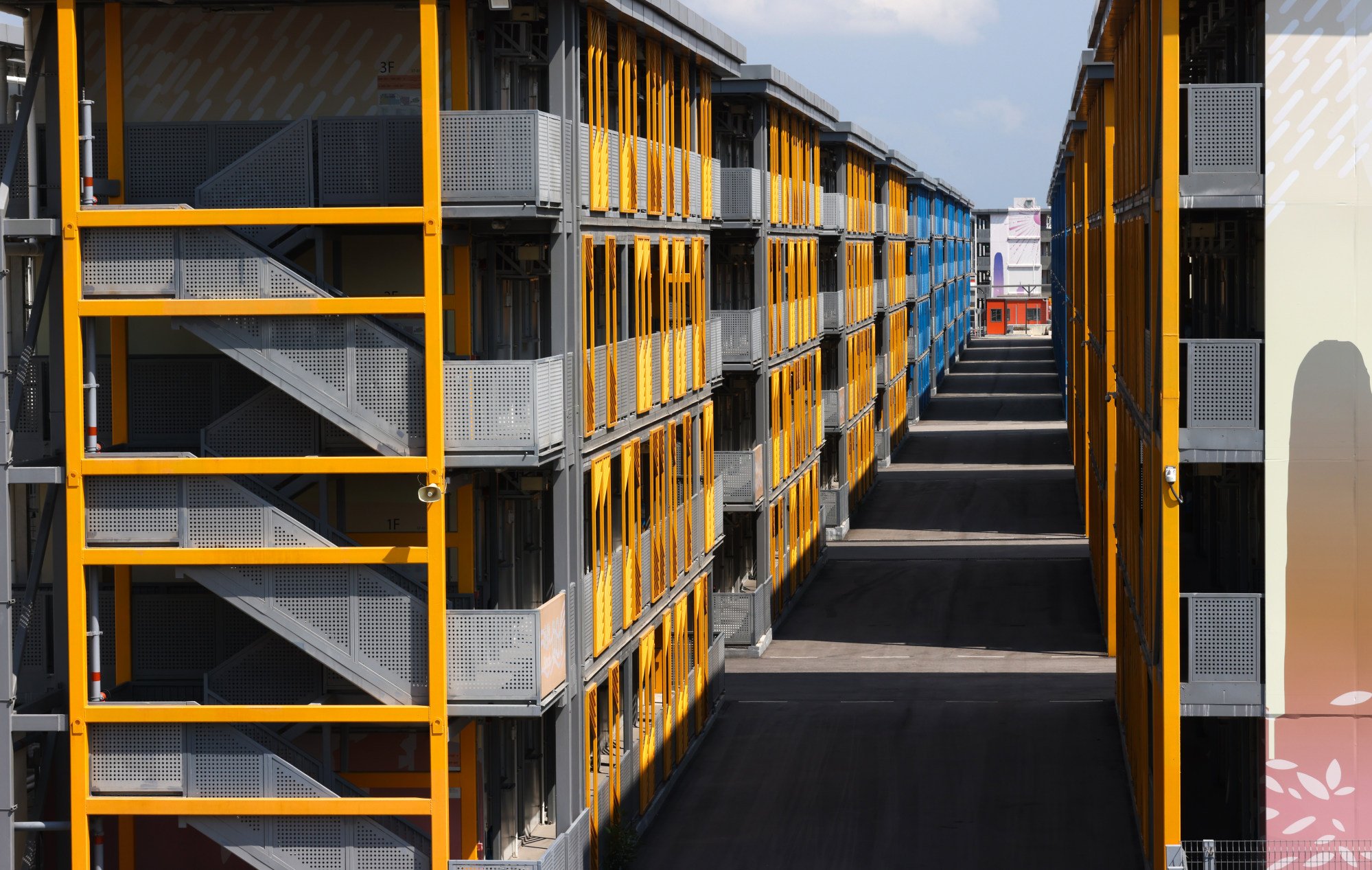An idle Covid-19 isolation facility located on prime Hong Kong land in Kai Tak will be turned into a cultural and creative hub for young people amid public calls for more space to help future generations realise their dreams, the Post has learned.
A source said on Monday the coming opening of a major 50,000-seat venue nearby would also prompt Chief Executive John Lee Ka-chiu to find ways to promote synergy with Hong Kong Stadium in Causeway Bay and boost the development of sports-related industries.
Details of the plans for the isolation centre, occupying 11.5 hectares (28.4 acres) of the old airport runway in Kai Tak, would be announced in the city leader’s policy blueprint on Wednesday, the insider said.
Do you have questions about the biggest topics and trends from around the world? Get the answers with SCMP Knowledge, our new platform of curated content with explainers, FAQs, analyses and infographics brought to you by our award-winning team.
The cost of maintaining the facility, at about HK$400,000 a month, has sparked questions over how it can be put to better use.
Some have said its use should align with a 2011 planning vision to turn Kai Tak into the city’s second central business district with the rest of East Kowloon.
But the insider said the site would become a space for young people.
“The policy address will address young people’s needs. Turning the facility into a space for young people to have exchanges on culture and art is one example,” the source said.
The insider added that the main stadium of Kai Tak Sports Park, set to open next year, would provide opportunities for the city to develop sports-related industries, which only accounted for about 2.2 per cent of the city’s GDP in 2022, according to the latest publicly available official figures.
“To ride on this synergy, Hong Kong Stadium should operate in a complementary manner to the new stadium in Kai Tak too,” the source said, noting departments would review the future use of the old stadium.
Secretary for Development Bernadette Linn Hon-ho told lawmakers in April that the government had been considering giving the Covid-19 isolation facility a new purpose, with authorities slammed for spending too much to maintain an empty centre on prime real estate.
The pandemic-era centre comprises a few dozen four-storey buildings, providing about 3,000 isolation rooms equipped with bathrooms.
Linn said the administration was considering short-term solutions that could work in tandem with Kai Tak Cruise Terminal, or that could help it serve as a base for the creative industry.
Lawmaker and veteran town planner Andrew Lam Siu-lo said authorities needed to rethink the positioning of East Kowloon as a central business district as public needs and the market had changed.

He noted the rise of the virtual economy and technology, as well as post-pandemic work trends that reduced demand for traditional offices.
According to real estate company JLL, the overall vacancy rate of grade A office space was 13.4 per cent, but as low as 18.8 per cent in Kowloon East as of August.
“The global trend is about building a central social district. If we cling to the past, we may not be able to adapt to the market, let alone lead the market,” Lam said.
The concept centres on blending work, leisure, culture and social interaction in an area, unlike a central business district that focuses on commercial real estate.
Mac Chan Ho-ting, a member of the Youth Development Commission, urged the government to engage with the younger generation when planning the potential cultural hub.
He also hoped the site could provide more studios, performance venues and exhibition spaces for young artists.
“They often lack performing arts venues as it is difficult to book government facilities ... They also need more exhibition space to showcase their artworks and build their reputation,” Chan said.
But a leading surveyor, Lau Chun-kong, said there could be “challenges” to using the site as it was filled with housing blocks and had limited open space.
He said part of the site was initially earmarked for leisure and entertainment purposes to work with the cruise terminal, while the rest was reserved for open space.
Lau warned that repurposing the facility as a cultural hub might result in the loss of a significant portion of open space.
He also questioned whether the area could still be a world-class tourism, leisure and entertainment zone as previously planned if the new idea was pursued.
Lobo Louie Hung-tak, senior lecturer of health and physical education at the Education University of Hong Kong, said the potential youth arts hub could help turn the district into a cultural base with Kai Tak Sports Park, but departments would need to collaborate.
He said the park should not only focus on organising sports events but also cultural ones, such as pop music concerts, to make full use of its 50,000-seat main stadium.
Unlike the privately run Kai Tak sports complex, the government-owned Hong Kong Stadium could focus on serving the community as it could offer cheaper rent, he said.
Back in 2021, authorities proposed rebuilding Hong Kong Stadium to hold international sports matches and open it for public use.
The proposal suggested reducing its existing 40,000 seats to 9,000, as well as adding track and field facilities.
Sports are now part of the government’s mega event economy, with the city’s roster this year being stacked with over 210 activities to lure tourists and boost spending after the pandemic.
More from South China Morning Post:
- Hong Kong’s John Lee orders ‘many drills’ at Kai Tak stadium ahead of Coldplay shows, opening
- Hong Kong in big push to promote Kai Tak Sports Park ahead of opening, says John Lee
For the latest news from the South China Morning Post download our mobile app. Copyright 2024.





